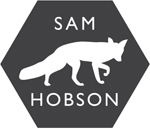After discovering the urban deer site I mentioned in my last post, I couldn't wait to get back and spend a bit more time photographing them. After previously visiting on 3 different nights and only having any luck once, I knew I'd need a few days to get anything decent, so I bit the bullet and decided to book into a nearby hotel to maximise my opportunities. I'd already learnt a bit about the particular spots the deer liked to feed and the routes they used to venture out of the woods and into the urban surrounds, so starting off, I was in a good place to get in position as soon as they appeared..
Peering out from the edge of a copse, they'd wait for things to quieten down - usually around 2 o'clock before making a break from cover and dashing into the city.
By around 3 o'clock they'd find a quiet spot with a nice bit of grass to feed on and start to settle down. Gradually the bolder ones would venture into the busier streets, only dashing into the shadows when a car or bus went by.
The larger herds stuck to the playing fields, where they were less likely to be disturbed.
On my first attempts, my pictures looked a little grainy, so I decided to use a lower ISO this time and took things down to to around 400-640. This got rid of the noise, but meant that I needed shutter speeds of between 0.5 and 3 seconds at f2.8, but I had a tripod and a bean-bag so I was good to go. Deer are the perfect subject for slow shutter-speeds - often between feeds, raising their heads and staying stock-still to watch and listen for danger.
The trick is definitely to get in front of them, get your shot ready and wait for them to walk into frame. Chasing them around just doesn't work. They are always on high alert and remain skittish, so you need to be quietly patient and just hope that it all comes into place.. Like when a full-grown buck walks out into the street, in front of a bus stop!
By around 5 in the morning, the deer start thinking about heading home after their night out, back into the woods before the city's residents start to stir. It's crazy to think that a lot of people sat at the bus stops on the way to work will never realise that wild deer may have been feeding around their feet just a few hours before.
By the end of 3 long nights, I was ready to go home myself. I'll definitely return before the Spring, when the deer have less need to come out of the woods to feed. It's quite a difficult project and can be frustrating - particularly when they are giving you the run-around and you don't take a single picture all night, but the excitement when things fall into place and the photographic rewards definitely make it worth the lack of sleep :)
You can view these images at a higher resolution on my portfolio site.
P.S. Re. the title - they are fallow deer, so they're 'bucks' and not actually 'stags' but nothing wrong with a little grammatical inaccuracy for the sake of a bit of cheese!























